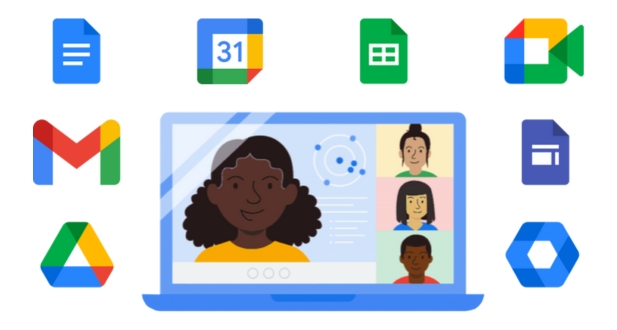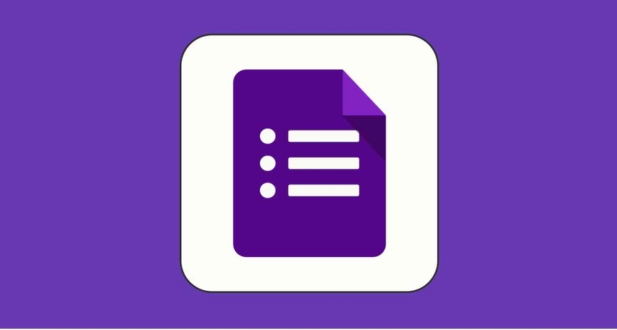Introduction
In today’s fast-paced digital era, data is at the heart of informed decision-making. Businesses, educational institutions, and organizations of all sizes rely on efficient and streamlined methods to collect, analyze, and utilize data effectively. Google Workspace Forms and Surveys emerge as powerful tools in this context, offering a user-friendly and collaborative approach to gathering valuable insights. In this comprehensive guide, we will explore the intricacies of Google Workspace Forms and Surveys, uncovering their features, functionalities, and tips for optimizing their use.
Understanding Google Workspace Forms
Overview and Basics
Google Workspace Forms stands out as a powerful and versatile tool designed to facilitate the creation of surveys, quizzes, and forms with ease. This application boasts an intuitive interface that streamlines the process of collecting data from a diverse range of sources. Whether you’re a novice or an experienced user, Google Workspace Forms offers a user-friendly experience, making it accessible for individuals and teams seeking efficient data collection solutions.
The tool seamlessly integrates with other Google Workspace applications, creating a cohesive environment for users. This integration enhances the overall workflow, allowing for easy sharing, collaboration, and data management across various Google Workspace tools. In essence, Google Workspace Forms serves as a centralized hub for collecting and organizing information, contributing to a more efficient and collaborative work environment.
Key Features
- Form Creation:
Google Workspace Forms provides a step-by-step guide for creating forms, ensuring a straightforward process from the initial selection of templates to the customization of questions. This feature caters to users with varying levels of expertise, offering a guided experience for those unfamiliar with form creation and a flexible environment for those looking to customize their forms extensively.
- Question Types:
The application supports a variety of question types, ranging from multiple-choice and short answers to more complex formats. This flexibility enables users to design forms that suit their specific data collection needs. Whether gathering quantitative data through checkboxes or qualitative insights through open-ended questions, Google Workspace Forms accommodates a wide array of information collection requirements.
- Theme Customization:
To enhance the user experience and align forms with branding or personal preferences, Google Workspace Forms allows for extensive theme customization. Users can personalize their forms with a range of themes, colors, and images. This feature not only adds aesthetic value but also contributes to a more engaging and cohesive presentation of forms.
- Logic and Branching:
Google Workspace Forms empowers users to create dynamic and interactive forms by incorporating logic and branching based on respondent answers. This feature is particularly valuable for designing surveys or quizzes with tailored follow-up questions or directions. Logic and branching add depth and relevance to the data collected, making the forms more adaptable to various scenarios.
- Collaboration:
Recognizing the importance of teamwork, Google Workspace Forms offers collaborative features that enable multiple users to work on a form simultaneously. This real-time collaboration ensures seamless communication and coordination among team members, fostering efficiency in the form creation and data collection process. The collaborative aspect is especially beneficial for teams working on projects that involve extensive data gathering or feedback collection.
Harnessing the Power of Google Surveys

A. Creating Effective Surveys
In the realm of data collection, crafting effective surveys is paramount to extracting accurate and valuable insights. To achieve this, adhering to survey design best practices becomes crucial. This involves meticulous attention to question phrasing, ensuring clarity and relevance to the survey’s objectives. The order of questions also plays a pivotal role, in influencing the flow of responses and overall data quality. By implementing these best practices, survey creators can enhance the reliability and usability of the gathered data.
Moreover, the ubiquity of mobile devices necessitates a focus on mobile optimization in survey design. Given the diverse range of platforms respondents may use, ensuring surveys are accessible and user-friendly on mobile devices is essential. This not only broadens the reach of the survey but also enhances the user experience, thereby promoting higher response rates and more accurate data collection.
For situations where an internet connection may be unreliable or nonexistent, incorporating offline data collection capabilities into surveys becomes imperative. This involves setting up surveys to function seamlessly without internet access, catering to diverse settings where connectivity may pose a challenge. By addressing this aspect, survey creators ensure the versatility of their data collection methods, making surveys adaptable to a variety of real-world scenarios.
B. Integrating with Google Workspace
Seamless integration with Google Workspace adds another layer of efficiency to the survey process. One notable integration is with Google Sheets, where survey responses seamlessly sync, facilitating organized data management. This integration streamlines the transfer of survey data into a structured format, allowing for easy analysis, visualization, and sharing of results. Google Sheets’ collaborative features further enhance the collective engagement of team members involved in the survey analysis process.
Furthermore, Google Drive serves as a central hub for storing and accessing survey data. Understanding how survey data is stored in Google Drive is essential for ensuring both data security and accessibility. Google Drive’s robust security features safeguard sensitive information, while its cloud-based nature enables convenient access from any location with an internet connection. This integration not only enhances the overall efficiency of data management but also contributes to a more streamlined and secure surveying process.
Advanced Features and Functionalities

Google Forms and Surveys offer a plethora of advanced features and functionalities that go beyond the basic form-building capabilities. These enhancements not only improve the user experience but also enable users to extract deeper insights from the data collected. Here, we’ll delve into three key aspects: Add-ons and Extensions, Data Analysis Tools, and Automation with Google Apps Script.
A. Add-ons and Extensions:
One notable feature of Google Forms is its compatibility with third-party add-ons and extensions. These external tools can significantly extend the functionality of Forms and Surveys. Users can explore a variety of add-ons that cater to specific needs, such as integrating with other applications, enhancing form design, or automating certain processes. For instance, add-ons can enable advanced question types, integrate with cloud storage services, or facilitate real-time collaboration, providing users with a customized and powerful form-building experience.
B. Data Analysis Tools:
Google Forms comes equipped with built-in data analysis tools that empower users to derive meaningful insights from the collected data. Through the use of charts, graphs, and summary statistics, users can visualize trends and patterns in the responses. This feature not only simplifies the process of data interpretation but also makes it easier to communicate findings to stakeholders. Whether it’s analyzing survey responses, quiz results, or feedback data, the data analysis tools within Google Forms contribute to a more informed decision-making process.
C. Automation with Google Apps Script:
Google Apps Script serves as a powerful tool for automating various tasks and workflows within Google Forms and Surveys. This scripting language allows users to create custom functions, automate repetitive actions, and integrate with other Google Workspace applications. When applied to forms, Google Apps Script can streamline processes such as sending personalized email notifications, dynamically populating form fields, or automatically organizing collected data. This level of automation not only saves time but also ensures consistency and accuracy in handling form-related tasks, making it a valuable asset for users seeking to optimize their workflow.
The advanced features and functionalities within Google Forms and Surveys provide users with a comprehensive toolkit for creating, analyzing, and automating their data collection processes. Whether through third-party add-ons, built-in data analysis tools, or the automation capabilities of Google Apps Script, users can tailor their form-building experience to meet specific requirements and extract valuable insights from the collected data.
Google Workspace Forms in Education

-
Quizzes for Assessment: How educators can leverage Google Forms to create quizzes and assessments for students.
Google Workspace Forms provides educators with a versatile platform for creating quizzes and assessments tailored to the specific needs of their students. The intuitive interface allows teachers to design questions ranging from multiple-choice to open-ended, enabling a comprehensive evaluation of students’ understanding. The form creation process is user-friendly, making it accessible to educators with varying levels of technical expertise.
One of the key advantages of using Google Forms for assessments is the ability to easily customize and share quizzes. Educators can distribute forms through email, shareable links, or embed them in other educational platforms. This flexibility enhances the accessibility of assessments, allowing students to complete them at their own pace, fostering a more inclusive learning environment.
-
Automated Grading: Exploring the automated grading feature and its benefits in educational settings.
A standout feature of Google Forms is its automated grading functionality. This time-saving feature enables educators to streamline the grading process by letting the platform automatically score quizzes. As students submit their responses, the system instantly evaluates their answers based on pre-defined criteria set by the teacher.
Automated grading not only reduces the burden on educators but also provides immediate feedback to students. This timely feedback is crucial for their learning process, allowing them to understand their strengths and areas that need improvement. Additionally, it facilitates a more efficient use of educators’ time, enabling them to focus on analyzing student performance and tailoring instructional strategies accordingly.
Feedback and Surveys for Continuous Improvement:
Discuss how forms can be used for collecting feedback from students and colleagues to enhance the learning environment.
Beyond assessments, Google Forms plays a pivotal role in fostering a culture of continuous improvement in education. Teachers can use forms to collect valuable feedback from students, gaining insights into the effectiveness of their teaching methods and the overall learning experience. This feedback loop enables educators to make data-informed decisions, adapting their approaches to better meet the needs of their students.
Google Forms can be employed to conduct surveys among colleagues, promoting collaborative reflection and professional development. By gathering input from peers, educators can exchange ideas, share best practices, and collectively contribute to an environment of ongoing improvement. This collaborative aspect enhances the collective efficacy of the educational community, fostering an atmosphere where everyone is invested in the success of both educators and students alike.
Real-world Applications and Success Stories
Business Use Cases:
Google Forms and Surveys have become integral tools for businesses across various industries, offering a versatile platform for collecting and analyzing data. One prominent application is in market research, where companies utilize these tools to gather insights into consumer preferences, market trends, and competitor analysis. Through well-crafted surveys, businesses can obtain valuable information that informs strategic decision-making and product development.
Customer feedback is another critical area where Google Forms prove to be invaluable. Companies use surveys to gauge customer satisfaction, identify areas for improvement, and tailor their products or services to meet customer expectations. This real-time feedback mechanism enhances customer relationships and contributes to the overall improvement of business operations.
In addition, employee engagement surveys conducted through Google Forms are a popular practice among businesses aiming to foster a positive work environment. These surveys provide a channel for employees to express their opinions on workplace culture, communication, and job satisfaction. By leveraging this data, organizations can implement targeted initiatives to enhance employee morale and productivity.
Educational Institutions:
Google Forms has found extensive utility in the realm of education, serving as a multifaceted tool for various purposes within academic institutions. One notable application is in academic research, where professors and researchers use forms to collect data for studies and experiments. The simplicity and accessibility of Google Forms make it an ideal choice for administering surveys and questionnaires, streamlining the research process for educational professionals.
Student feedback is another domain where Google Forms has made a significant impact. Educational institutions employ these forms to gather insights into the learning experience, course effectiveness, and teaching methodologies. This data-driven approach aids in continuous improvement, allowing educators to adapt their methods based on student input, ultimately enhancing the quality of education.
Administrative tasks within schools and universities are also streamlined through the use of Google Forms. From event registrations to course evaluations, institutions leverage these forms to automate processes, reduce paperwork, and improve overall efficiency. This not only saves time but also ensures a more organized and responsive administrative structure within educational establishments.
Tips for Optimization and Best Practices
-
Security Measures: Ensuring the security of sensitive data collected through forms and surveys.
Security is paramount when dealing with sensitive data collected through Google Forms and Surveys. To optimize security, consider implementing measures such as encryption for data transmission and storage. Utilize HTTPS to secure data in transit and ensure that respondents’ information is safeguarded against potential threats. Additionally, restrict access to forms by implementing proper permissions and authentication mechanisms. Regularly audit and review access logs to detect any unauthorized activities. Educate form administrators and users about best practices for creating secure forms and highlight the importance of protecting sensitive information.
-
User Training and Onboarding: Strategies for effectively training users to maximize the potential of Google Forms and Surveys.
Optimizing the use of Google Forms and Surveys begins with comprehensive user training and onboarding. Develop training materials that cover the basics of form creation, customization, and distribution. Provide step-by-step guides and tutorials to help users understand advanced features and functionalities. Consider conducting workshops or webinars to address specific user queries and demonstrate best practices. Emphasize the importance of clear communication within forms and surveys to enhance user engagement. Regularly update training materials to align with new features and improvements in the platform, ensuring users stay informed and proficient in utilizing the full potential of Google Forms.
-
Regular Updates and New Features: Staying abreast of updates and new features to continually optimize the use of Google Forms and Surveys.
To maximize the effectiveness of Google Forms and Surveys, it’s crucial to stay informed about regular updates and new features introduced by the platform. Regularly check for updates in Google Workspace or relevant documentation to understand the latest enhancements. Establish a communication channel to inform users about new features and provide guidance on how to leverage them effectively. Create a schedule for reviewing and updating existing forms to incorporate new functionalities. Actively participate in Google Forms communities or forums to exchange insights with other users and stay ahead of emerging trends. By staying abreast of updates and embracing new features, users can continually optimize their use of Google Forms and Surveys for enhanced productivity and engagement.
Conclusion
Google Workspace Forms and Surveys stand at the forefront of data collection tools, providing users with a collaborative, intuitive, and powerful platform. By understanding the nuances of form creation, survey design, and advanced features, individuals and organizations can unlock the full potential of these tools, driving informed decision-making and enhancing overall efficiency. As we navigate through real-world applications and success stories, it becomes evident that Google Forms and Surveys are catalysts for positive change in various sectors, propelling us into a future where data is not just collected but transformed into actionable insights.
You can share your Google Form by generating a shareable link, sending email invitations, or embedding the form on a website. The sharing options are customizable to suit your needs.
Yes, you can collaborate in real-time with others on a Google Form. Multiple users can edit and view the form simultaneously, making it easy to work together.
Google Forms allows for basic customization, including themes, colors, and fonts. You can personalize the look of your form to align with your brand or preferences.
Yes, the number of responses may be limited for free Google accounts. Premium plans offer increased response limits for business and enterprise users.
You can view and analyze responses in real time through the Google Form interface. Additionally, responses can be exported to Google Sheets for more in-depth analysis.








